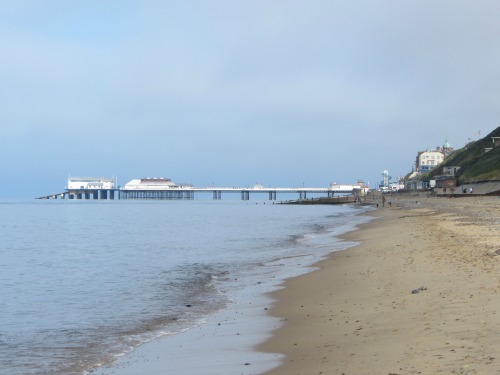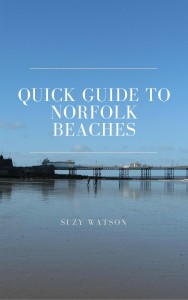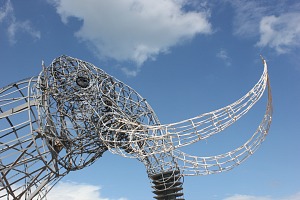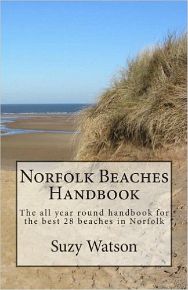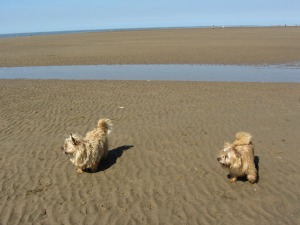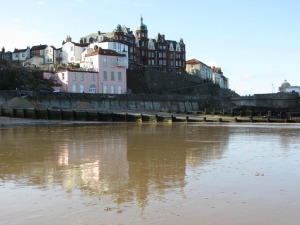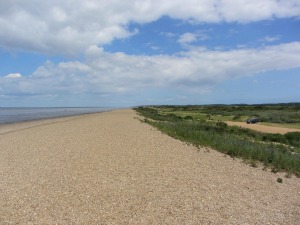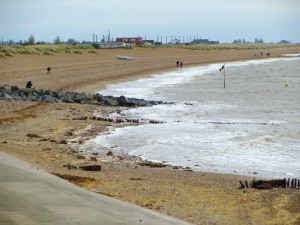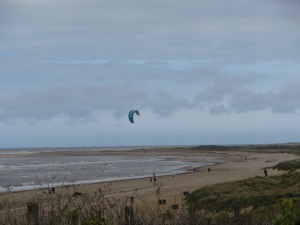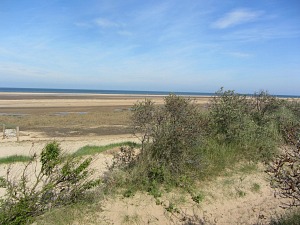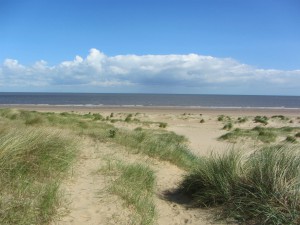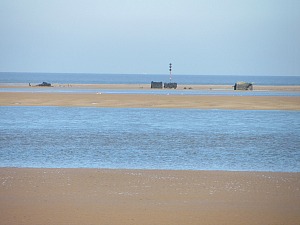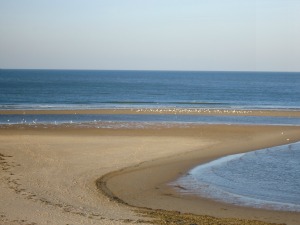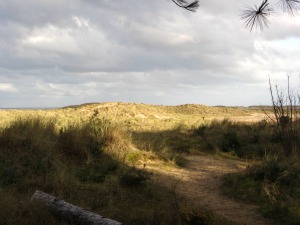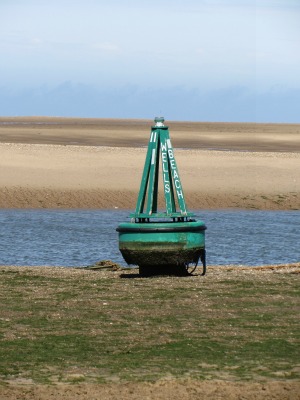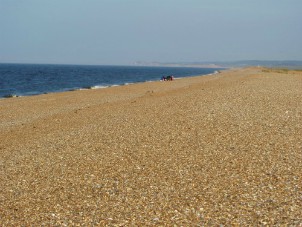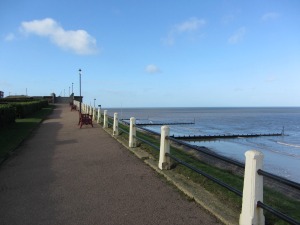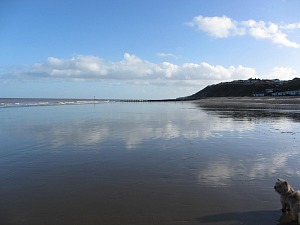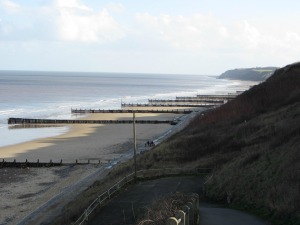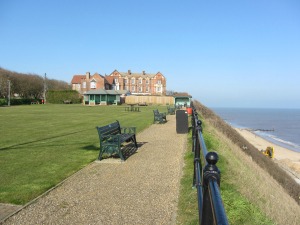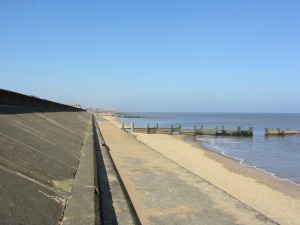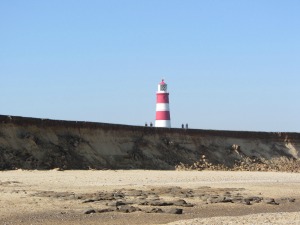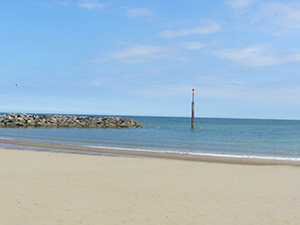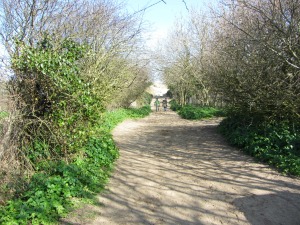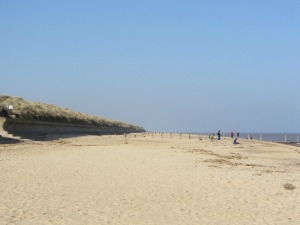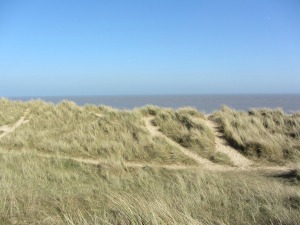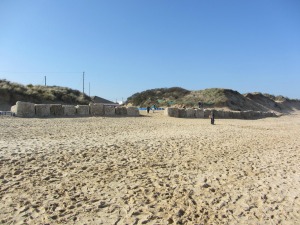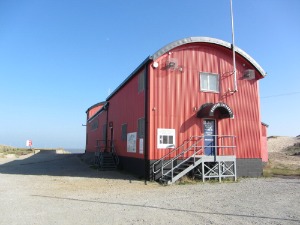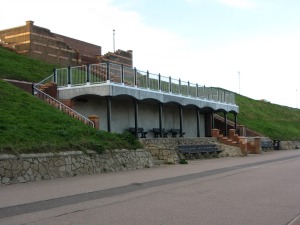- Explore Norfolk
- Beaches
- West Runton Beach
West Runton And East Runton Beach
West Runton beach is most well-known for the Elephant, or Steppe Mammoth which was discovered in 1990, dating back to the ice age and one of the oldest fossil elephants to be found in the UK.
It was very exciting and caused quite a stir in Norfolk! You can see a display on its recovery at the Cromer Museum and read more about the creation of the life size model on the West Runton Elephant here.
The remains were found in the cliff face, and if you’re geologically minded, it's an SSSI (Site of Special Scientific Interest) and for this reason, an important Norfolk beach, especially as it forms part of the largest chalk reef in Europe.
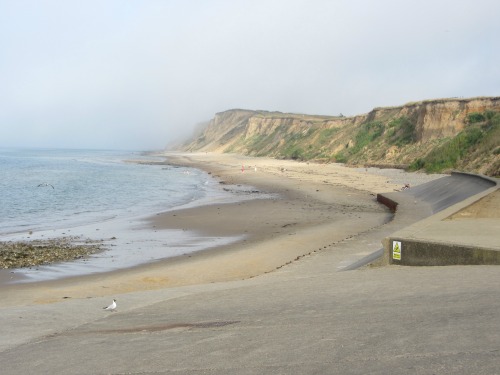
West Runton Cliffs
Fossil hunting, as with the cliffs at Hunstanton, is a big draw to this beach. It’s known as one of the best fossil collecting beaches around. You can hunt for hours digging up little interesting fossils, and if you’re with children, it can be a real excitement for them and you can pass the time of day very easily.
Rock pooling is very popular on this beach and it's known as one of the best rock pooling beaches in Norfolk. At low tide the pools to the left of the beach are revealed and come alive with little creatures crawling or swimming around.
It's also an excellent dog walking beach. You can easily walk from here to East Runton, about a mile, BUT make sure the tide is out, otherwise you’ll get stranded. When the tide comes in, it cuts off the corner. You can also walk to Sheringham, but again, beware of the tide.
Lifeguards patrol this beach during the summer months so it makes it very safe for children. It even has Blue Flag Status.
Taken on a misty day, below is the beach looking west. Due to cliff erosion, these 6 meter stacks have been erected to protect the cliff face, but when the tide goes out, you have lovely hard sand to walk on. Not too beautiful to look at when the tide is in so check tide times to really come and enjoy this beach!
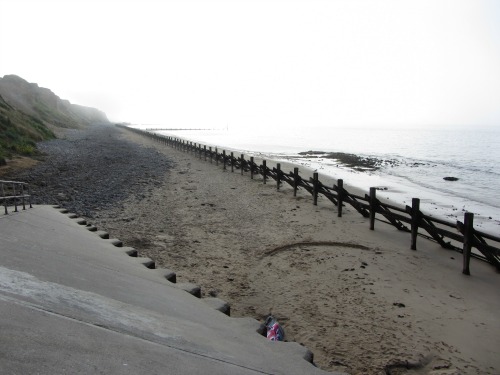
These two beaches are much smaller than the bigger swathes of open space you get at beaches such as Holkham, Wells, Old Hunstanton and Sheringham to the West and Overstrand, Mundsley and Sea Palling to the East.
Places to eat near West Runton Beach
There are a few places where you can either stop to sit down, or take away, on your visit to East and West Runton Beach.
Sea View Beach Cafe is open between March and October and is just on the ramp as you head on down to the beach.
On the cliff tops, a short walk away, is Rocky Bottoms, a seafood restaurant that is open for lunches every day and evening meals on selected days. This has fabulous views over the cliffs towards the sea, and you can also eat outside here when the weather is nice!
In West Runton there is the Tea Room @ Corner House which serves breakfasts, lunches and afternoon tea (need to book afternoon tea).
East Runton Beach
East Runton beach is also patrolled by Lifeguards. I think this beach is slightly more child friendly than West Runton, and much closer to the caravan parks and campsites at the top of the cliff, so more accessible if you’re visiting there. Just a short walk from the cliffs and you're onto the beach.
Both East and West Runton beaches have been awarded the prestigious Blue Flag status.
Tip
Low tide is definitely the best time to visit both these beaches if you want a bucket and spade day as you then get the hard sand, rather than the pebbly beach which is what is left at high tide.
From East Runton beach, you do get the spectacular view towards Cromer Pier with its Pavillion Theatre and Lifeboat house at the end of the Pier.
A very quintessentially English picture-postcard Pier.
And if you walk from East Runton to Cromer, (famous for its Cromer Crabs), along the beach, which won’t take very long, you come across an old pill box which has fallen from the cliff face onto the beach. It makes for wonderful photography and also quite a fascinating spectacle.
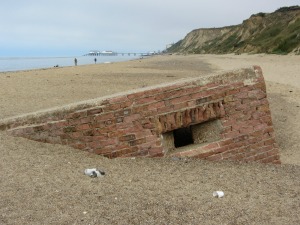
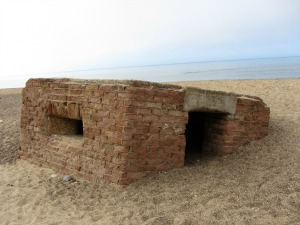
East Runton beach is also an excellent beach for walking your dogs, but as you can’t take them onto Cromer beach it’s probably best to walk from East Runton westwards as that will involve a longer walk!
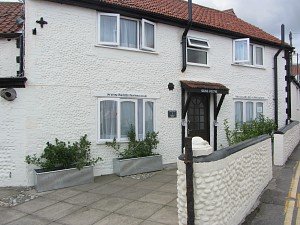
ACCOMMODATION SUGGESTION
The Smugglers at Sheringham is well worth taking a look at for B&B or self catering holidays. Located a 2 minute walk away from the beach, these rooms or apartments are perfect for any size of group.
If you’re at this beach, you have the advantage of being very close to the highest point in Norfolk, Beacon Hill, or Beeston Bump. You can reach the dizzy height of 300ft and have a lovely view over the sea and carry on walking on the North Coast Path to Sheringham. It used to be a WWII wireless interceptor station so if you walk to the top, you'll be able to read all about it on the information boards. To reach it you walk east out of Sheringham along the Norfolk Coast Path and just follow the path!


